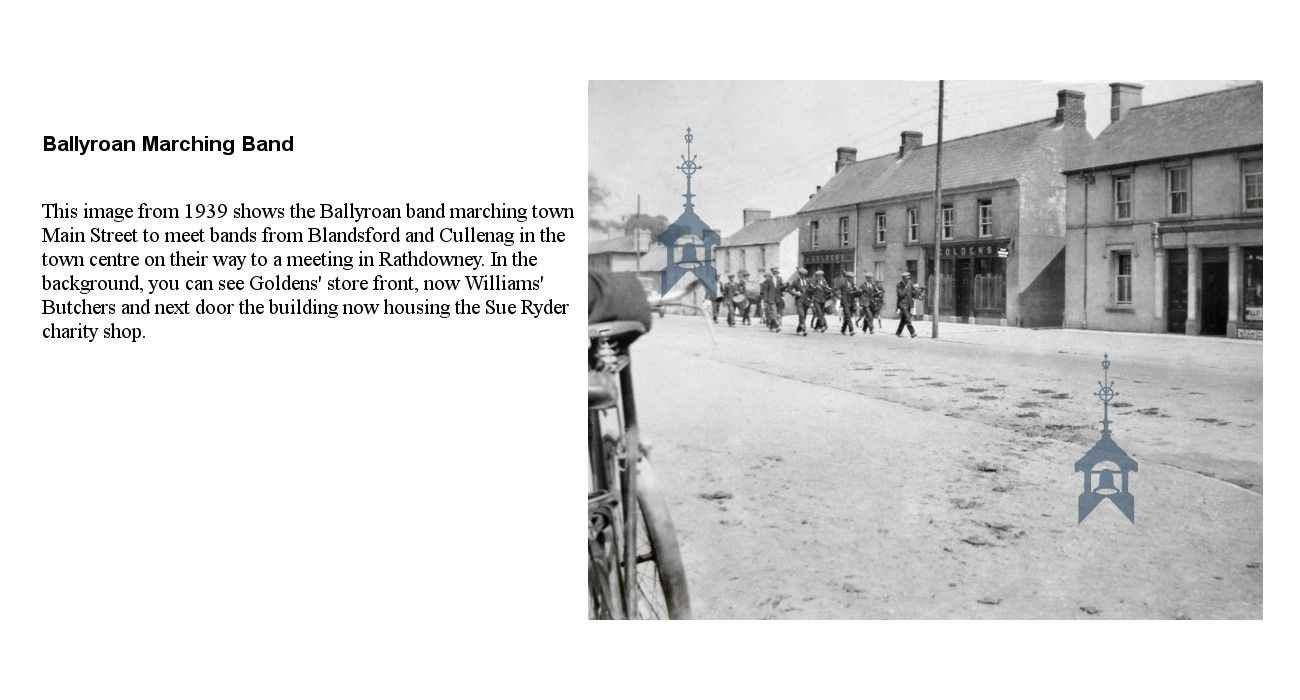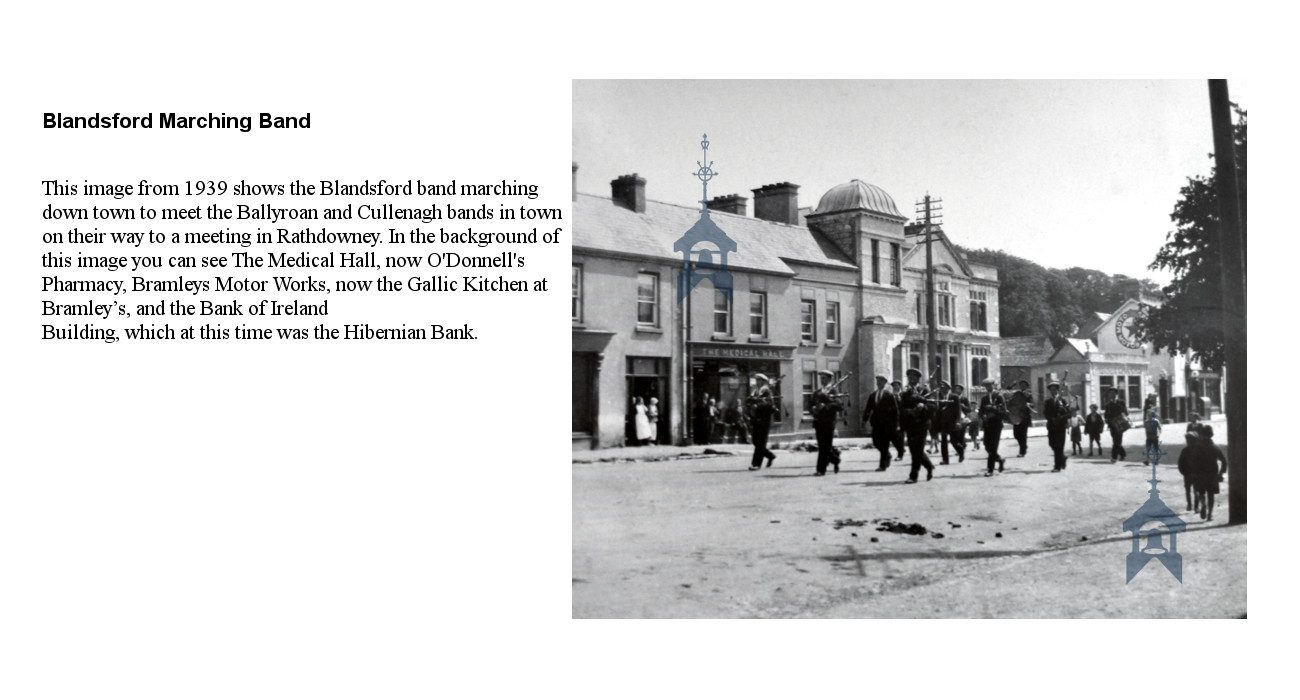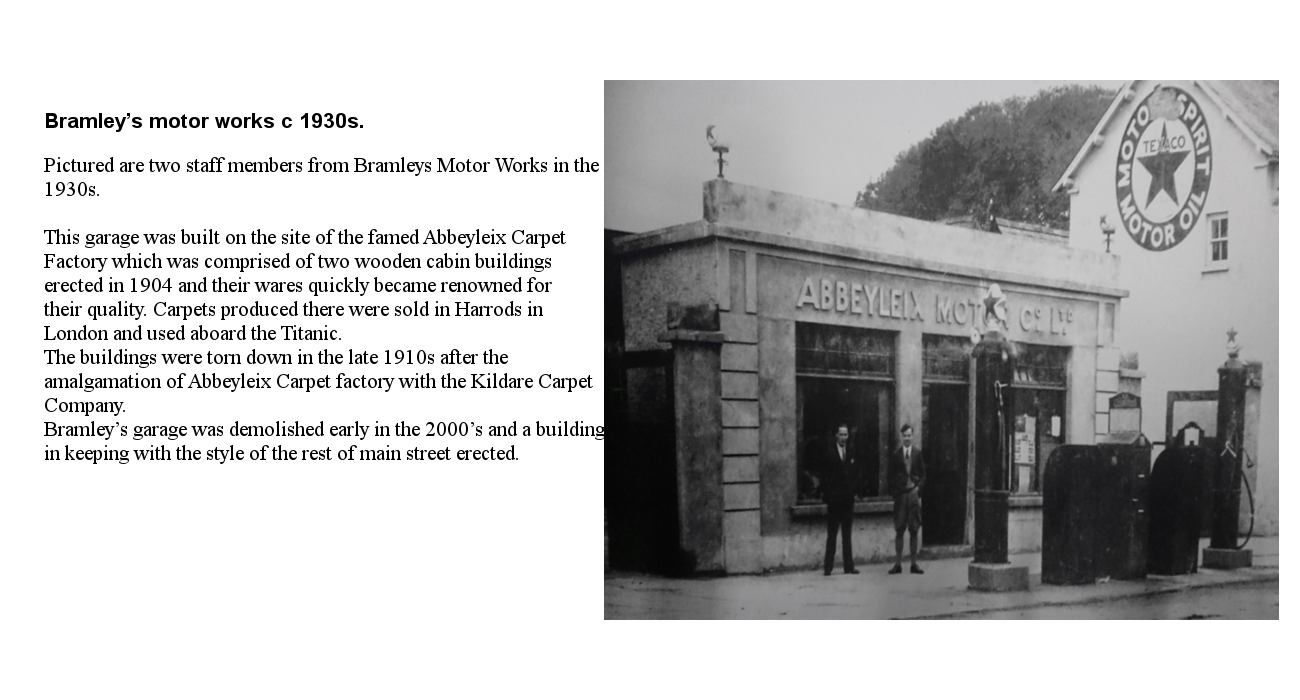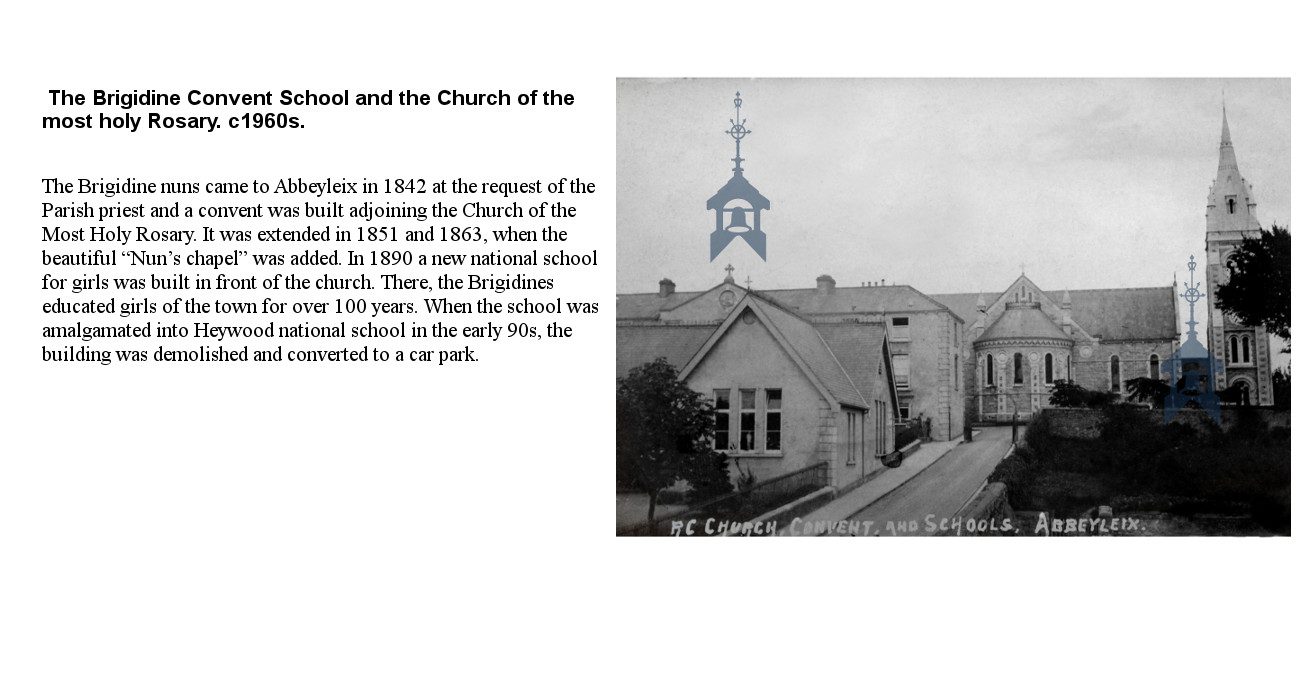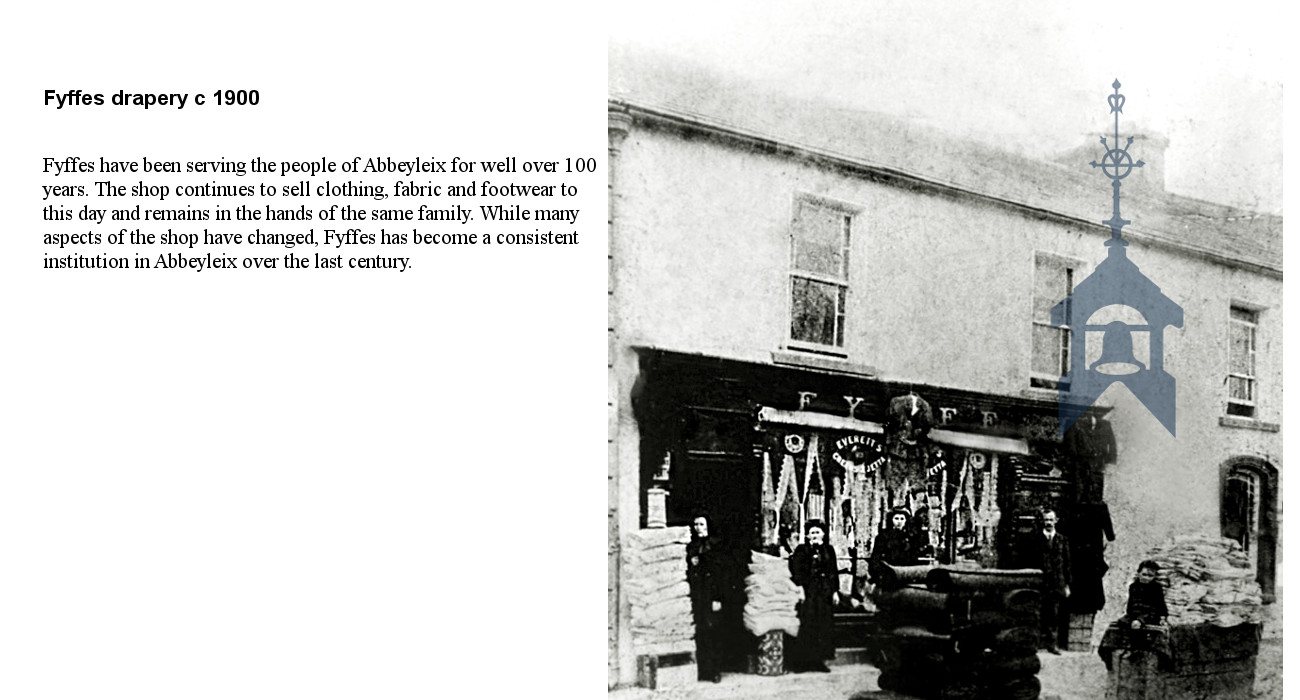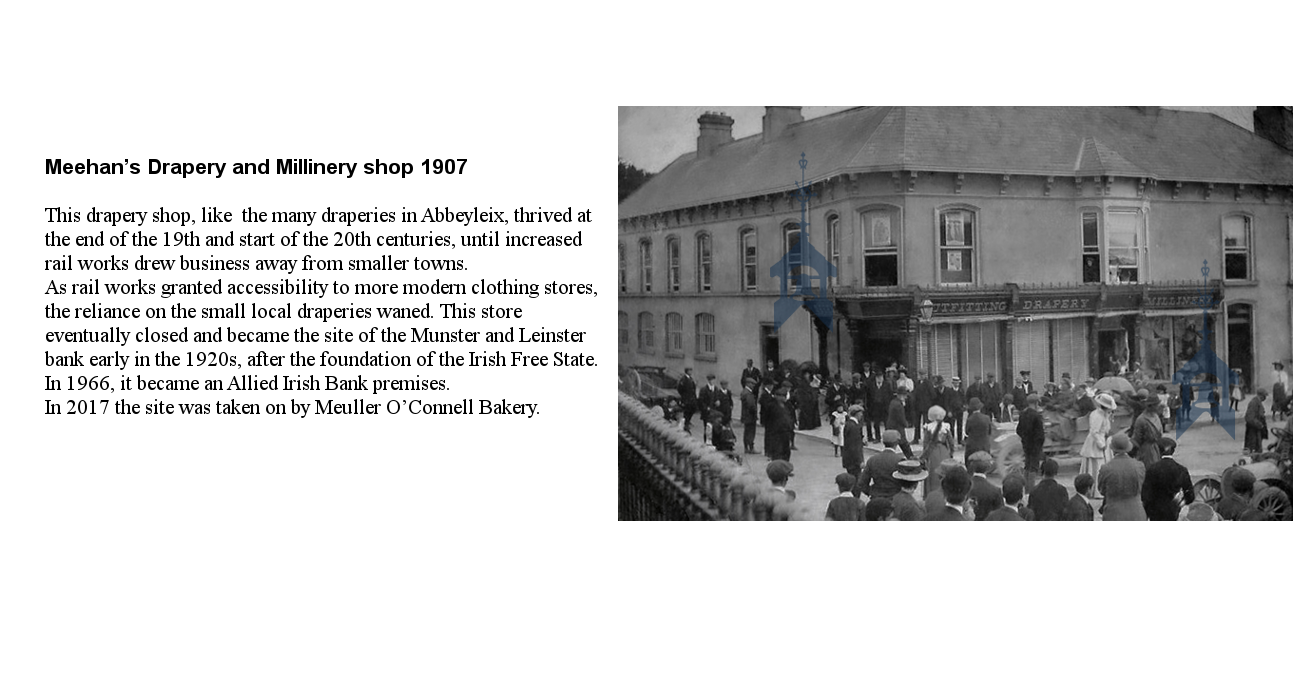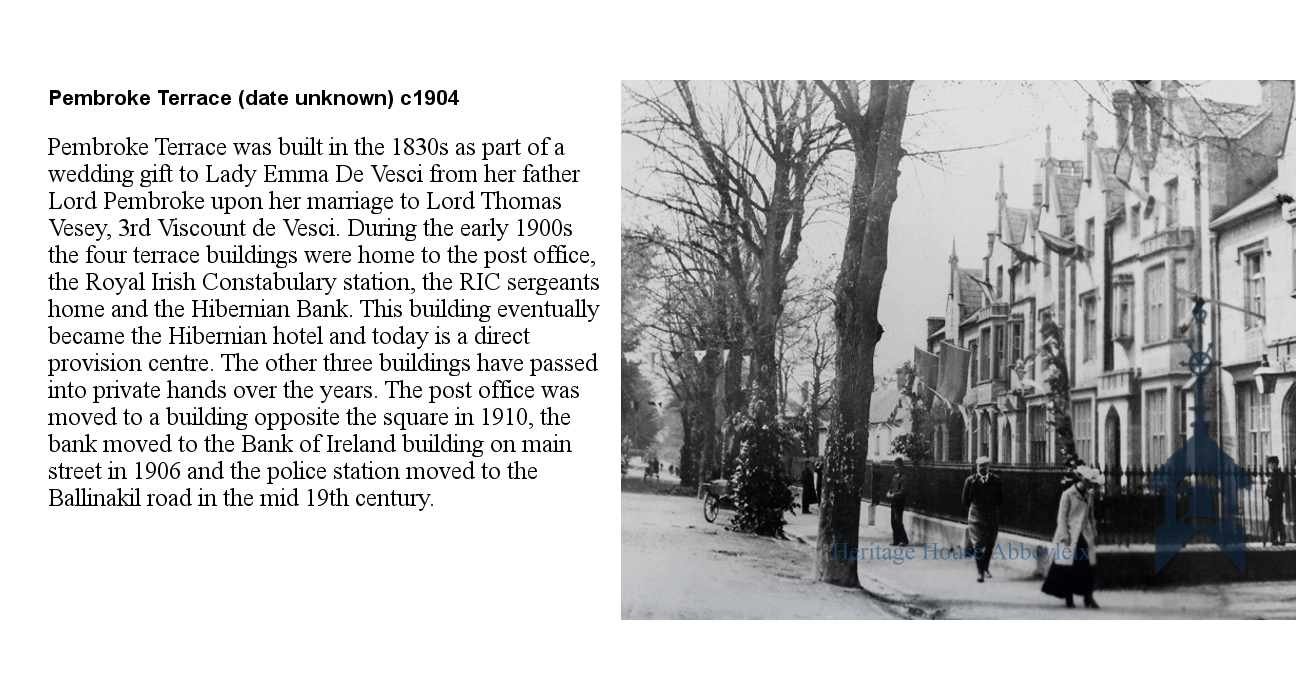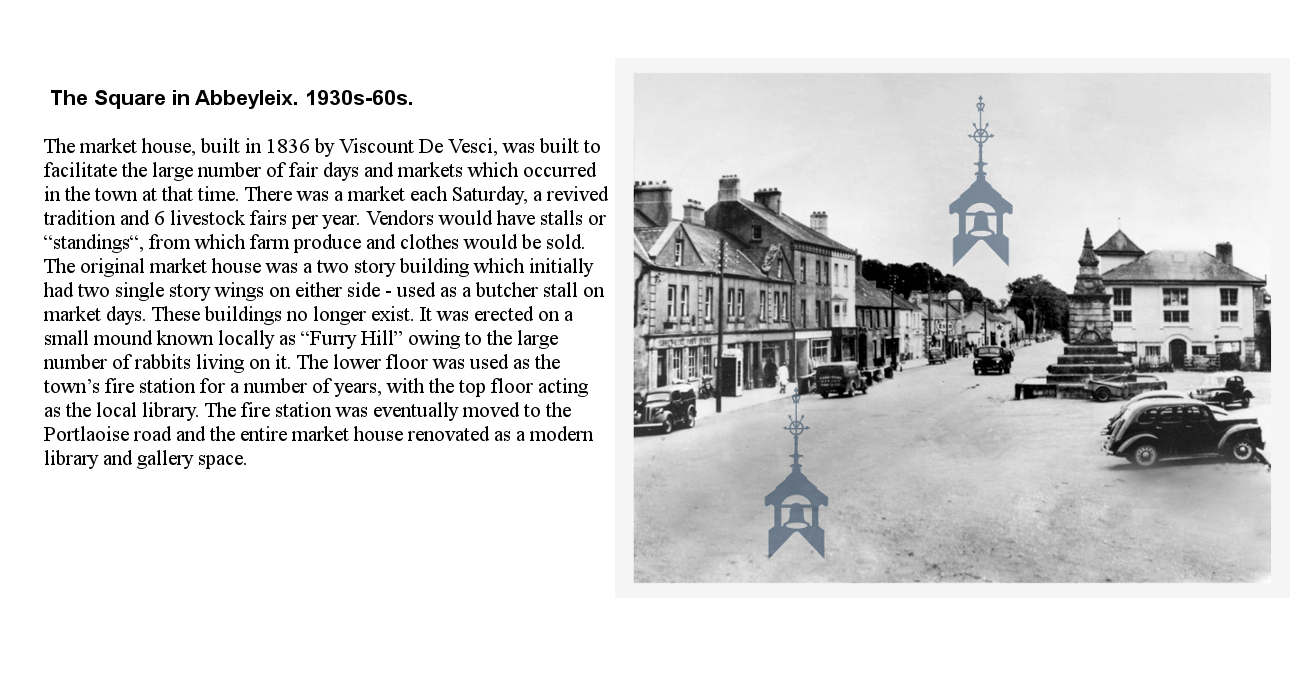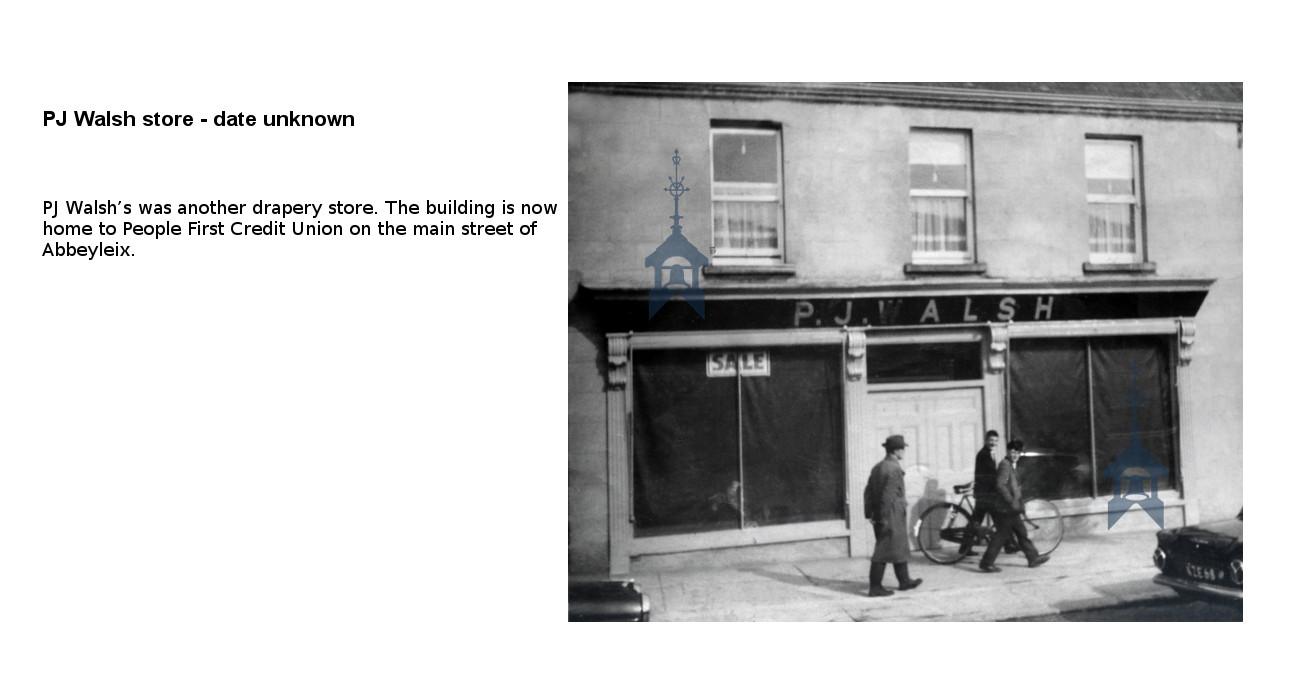Heritage House now has a range of heritage prints available to purchase. These photos have been captured locally over various time periods. Heritage House has chosen some of the most and interesting photos that show some of the major changes of life in Abbeyleix over the years. Each photo has been individually restored and sized at Heritage House.
The standard size we provide is 8 in x 10 in and is mounted and framed at a cost of €45.
We can cater to various photo sizes, with or without frames and mounts. Please get in touch and let us know what you are looking for. We would be more than happy to help!
Click on the image below for more photo options. You can use the arrows beside the images to scroll between them.

